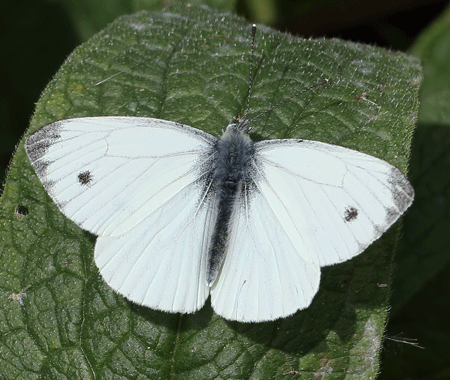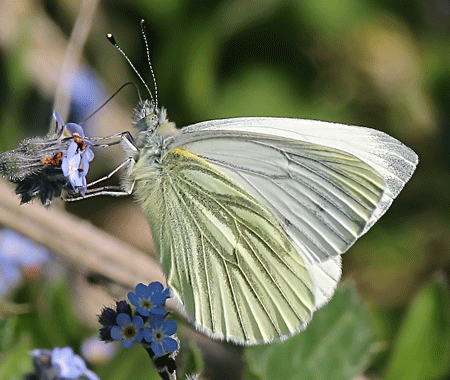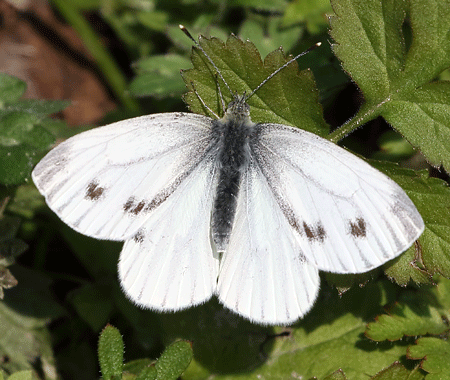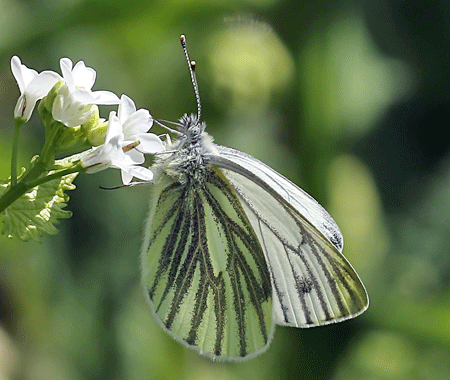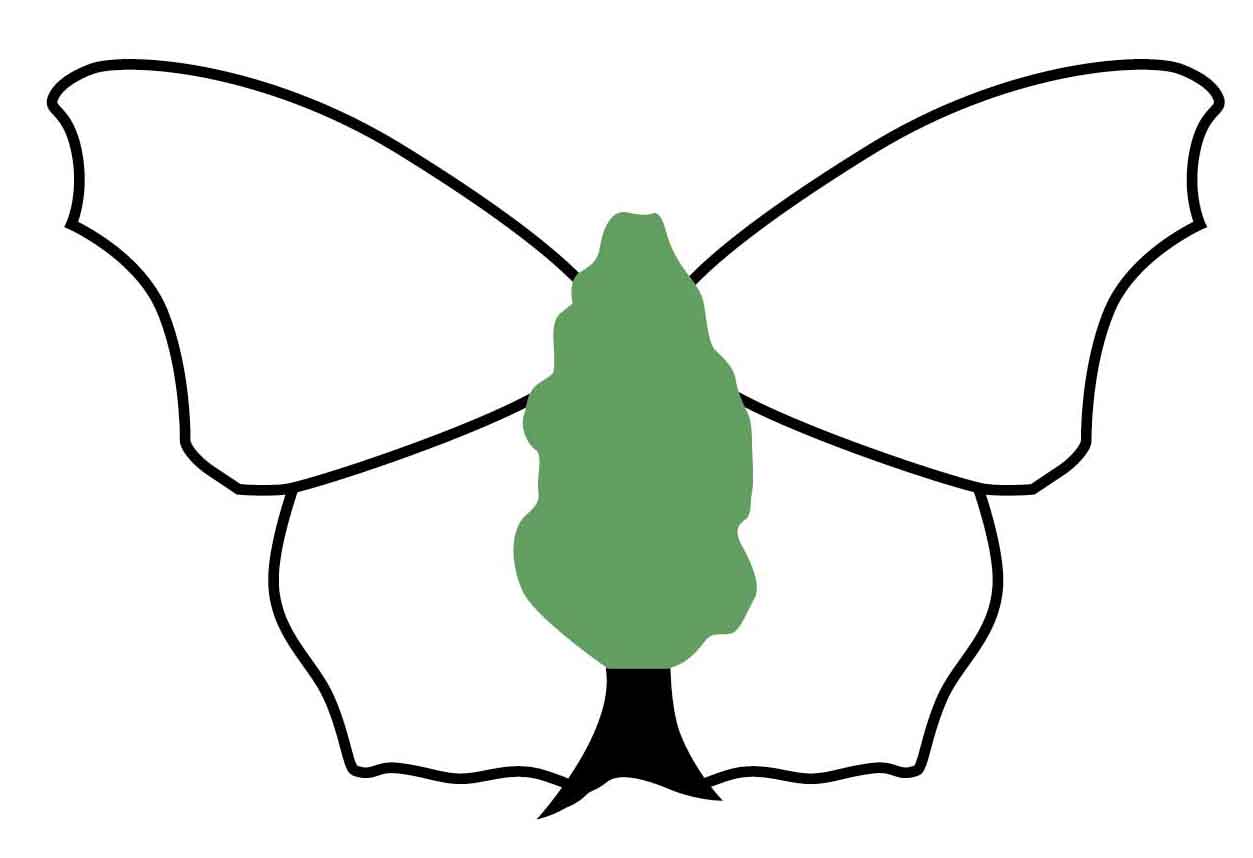 | Butterfly Conservation Saving butterflies, moths and our environment | Upper Thames Branch | 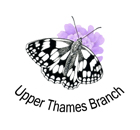 |
Green-veined White (Pieris napi) | |||||||||
| Description | |||||||||
| Wing span: 40-52 mm. The Green-veined White is a common butterfly of damp grassland and woodland rides that is often mistaken for the Small White. First-brood males usually have no spots on their upper forewings, whereas second-brood males can have one or two spots. Females have two spots in both broods. This species can be found throughout the British Isles. It prefers damper habitats such as stream and ditch edges, marshes and woodland rides. It can also be seen in gardens. | |||||||||
| Images (click to enlarge) | |||||||||
| |||||||||
| Life Cycle | |||||||||
| There are usually two broods per year. First-brood adults usually emerge in late April, peaking around the middle of May and tailing off through June. The second brood starts to emerge in early July. However, in good years, the second brood may emerge in late June and give rise to a third brood. It species over-winters as a pupa. | |||||||||
| Larval Foodplants | |||||||||
| The primary larval food plants are Charlock (Sinapis arvensis), Cuckooflower (Cardamine pratensis), Garlic Mustard (Alliaria petiolata), Hedge Mustard (Sisymbrium officinale), Large Bitter-cress (Cardamine hirsuta), Watercress (Nasturtium officinale), Wild Cabbage (Brassica oleracea) and Wild Radish (Raphanus raphanistrum). | |||||||||
| Nectar Sources | |||||||||
| Adults feed primarily on Betony, Bluebell, Bugle, Buttercups, Cuckooflower, Fleabane, Greater Stitchwort, Ragged Robin, Ragwort, Red Campion, Thistles and Vetches. | |||||||||
| UK Conservation Status | |||||||||
| Least Concern | |||||||||
| Earliest UTB first sighting (since 2004) : 15th March | |||||||||
| Mean UTB first sighting (since 2004) : 3rd April | |||||||||
| Distribution and Sites | |||||||||
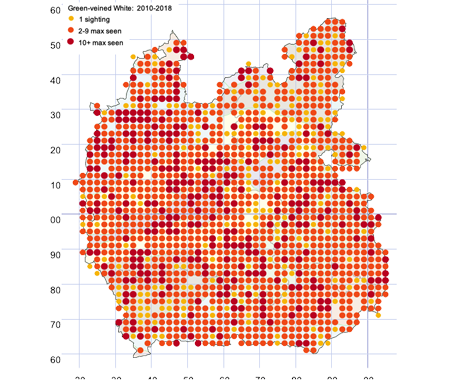 Key |
| ||||||||
| Related Species | |||||||||
| |||||||||
Copyright © Butterfly Conservation Upper Thames Branch 2007 - 2025. Privacy and Copyright Statement
Butterfly Conservation : Company limited by guarantee, registered in England (2206468)
Registered Office: Manor Yard, East Lulworth, Wareham, Dorset, BH20 5QP, Tel: 01929 400 209
Charity registered in England & Wales (254937) and in Scotland (SCO39268)
Butterfly Conservation : Company limited by guarantee, registered in England (2206468)
Registered Office: Manor Yard, East Lulworth, Wareham, Dorset, BH20 5QP, Tel: 01929 400 209
Charity registered in England & Wales (254937) and in Scotland (SCO39268)

